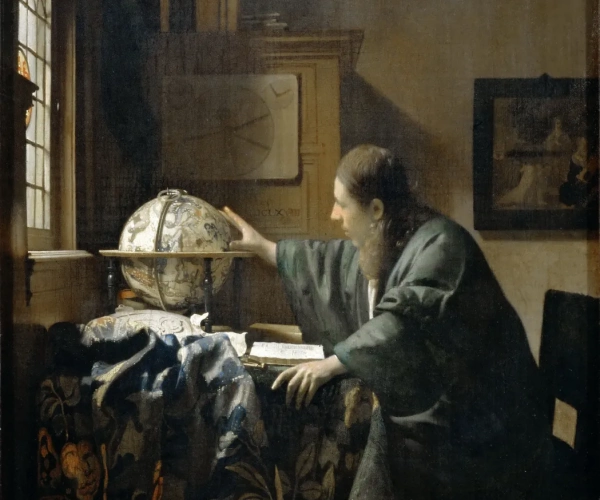The Astronomer c. 1668
Jan Vermeer van Delft's "The Astronomer," painted around 1668, is a captivating example of the artist's skill in capturing intimate domestic scenes infused with a sense of wonder and significance. The painting depicts a lone figure, presumably an astronomer, deep in thought as he examines celestial knowledge. The figure is delicately illuminated in a warm, golden light, creating a serene yet contemplative atmosphere within the domestic setting. Vermeer's meticulous attention to detail is evident in every aspect of the composition, from the precisely rendered books and maps in the background to the scientific instruments carefully arranged on the table. The artist's use of light and shadow serves to heighten the sense of quiet introspection, inviting the viewer to share in the scholar's absorption in his studies.
What sets "The Astronomer" apart from Vermeer's other works is the subtle dialogue it establishes between the worlds of science and art. While the subject matter is rooted in the pursuit of knowledge and understanding the cosmos, Vermeer's masterful handling of paint and composition elevates the scene to a poetic meditation on the human desire for exploration and enlightenment.
The painting's quiet drama and the sense of intellectual curiosity it conveys have made it a beloved example of Vermeer's oeuvre, standing as a testament to his ability to infuse everyday scenes with profound meaning and emotional resonance.







No Comments Yet...